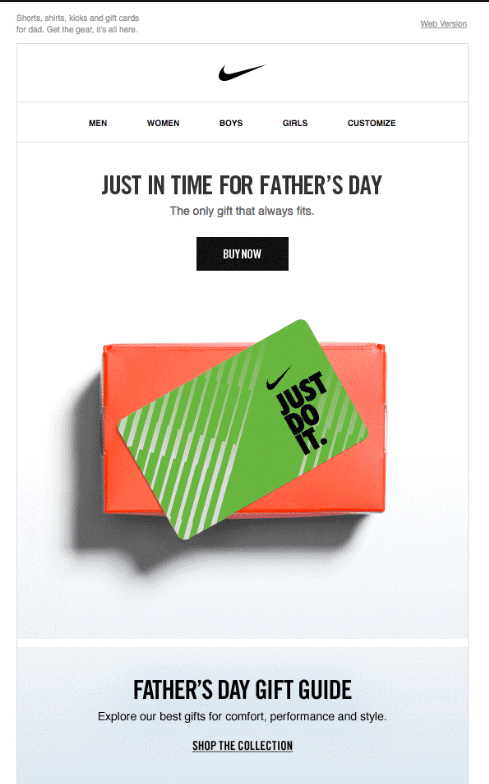At this point, it’s pretty safe to say that technology is more than just a big part of people’s lives, both professionally and personally. It’s truly a dominant force when it comes to just about everything, so it’s no wonder that it’s affected the marketing world to the extent that it has.
In fact, many are saying that digital marketing is supposed to replace traditional marketing. But is this something that will ever actually happen? And if it does, to what extent? Here’s a closer look at what today’s marketing professionals should know.
- What Is Traditional Marketing?
- Examples of Traditional Marketing
- What Is Digital Marketing?
- Examples of Digital Marketing
- How Has Digital Marketing Changed Traditional Marketing?
- What Are the Main Advantages of Digital Marketing Over Traditional Marketing?
- Wrap-Up
What Is Traditional Marketing?
The term “traditional marketing” generally refers to any type of marketing that existed before the internet came along and changed everything. Some methods leveraged the reach of print media like magazines and newspapers to present readers with everything from multi-page print advertising spreads to smaller ads strategically interspersed with the standard content.
Others involved broadcast advertising on radio or television. Options like direct mail marketing, telephone marketing, outdoor marketing (such as billboards or signage), and more were common ways for brands to reach target audiences, as well. Many of these methods are still widely used today.
Examples of Traditional Marketing
Yes, some people do believe digital marketing is supposed to replace traditional marketing. But it’s important to understand that traditional marketing is not dead yet.
Although internet-age businesses may not count on traditional marketing to the same extent they used to, many do still incorporate various methods into their larger strategies. Here are some examples to consider.
Billboards

An eye-catching billboard situated in a prime location can still be a huge marketing asset to the right company and can add up to thousands of sets of eyes on your marketing material every day. Billboards can also be a powerful way to encourage consumers to associate brands with pleasant experiences, favorite pastimes, and more.
Print Advertising
Print advertising is another form of traditional marketing that is still relevant. According to Nielsen Catalina Solutions, print advertising still comes attached to a promisingly high return on investment – about $3.94 for every advertising dollar invested. This form of advertising not only includes magazine and newspaper ads but direct mail options like catalogs, as well.
TV Spots

Thanks to the rise of options like TiVo and streaming media, the way people consume television advertising may have changed, but TV spots are still important ways brands reach target audiences. They remain alive and well in partnership with cable broadcasts. And many streaming platforms offer tiered subscription plans that still leave room for this form of advertising, as well.
What Is Digital Marketing?
In contrast to traditional marketing, digital marketing leverages the reach and ubiquity of the internet to reach target audiences and attract new customers. It’s about connecting with modern users where the vast majority of them spend the most time – social media, search engines, various websites, and more.
Some digital marketing methods involve improving a brand’s organic reach, such as search engine optimization, organic social media marketing, and email marketing. Others are paid approaches, like PPC marketing, social media ads, and sponsored partnerships. Many digital-age brands use a combination of paid and organic methods to reach audiences.
Examples of Digital Marketing
Modern digital marketing assets cover a lot of ground and can include virtually any tool, profile, or resource you might use online to market your business or products. Here’s a closer look at some of the most effective and commonly used.
Social Media Marketing

Social media marketing leaves a lot of room for individual expression and creativity, so there are many ways successful brands use it to market their products and services. For example, brands like Wendy’s are famous for using platforms like Twitter to connect with consumers in fresh, funny ways.
Brands also use numerous social media platforms to showcase their best products, help their on-site content reach a wider audience, and troubleshoot customer service issues for their clients.
Content Marketing

Content marketing is essential to any digital marketing campaign, but some approaches are more effective than others. Home Depot’s clean, attractive blog is a terrific example of how to do it right.
Not only is it filled with helpful resources and guest posts from industry experts, but each post is full of links to just the right Home Depot products for the job at hand. Home Depot has also mastered the art of effective SEO keyword usage, internal and external links, and a streamlined user experience.
Influencer Marketing

These days, every social media platform has its own exclusive group of influencers who do phenomenally well there and command large followings. Influencer marketing offers brands a unique opportunity to reach new audiences and connect with readily engaged groups of consumers via the influencers they love and trust.
This Instagram partnership between GoPro and Colorado outdoors influencer Loki is an excellent example of how effective it can be. Loki’s followers got a great product recommendation to enhance their own adventures, and GoPro got their product in front of a very valuable group of eyes.
Email Marketing

Email may have been around for almost as long as the internet has, but it’s far from dead or irrelevant. It’s also still one of the more effective ways to reach both existing and potential customers. Approximately 60 percent of today’s consumers say that email does influence their decisions as to what to buy and how often.
Emails that score the highest engagement rates generally either help a customer do something, offer them a deal they can’t refuse, or both.
Take this Father’s Day-themed marketing email from Nike, for example. The athletic shoe giant successfully combined snappy copy with an effective image to help its customers solve a nearly universal problem – finding a value-conscious Father’s Day gift their recipient will genuinely like and appreciate.
How Has Digital Marketing Changed Traditional Marketing?
Again, some are saying that digital marketing is supposed to replace traditional marketing. And their reasoning has a lot to do with all the ways the rise of digital marketing has already changed the way traditional marketers do things.
The concept of the internet actually dates all the way back to the 1950s. But mainstream usage began in earnest in the 1990s. It’s forced the world of marketing to continuously evolve ever since, and many of the ways this has occurred have actually made marketing easier. Here are a couple of examples of how.
Research Methods
No one who’s ever casually performed a Google search to get a quick answer to a question or dig up information on a favorite celebrity on the fly needs to be told that research has come a long way since the internet went mainstream.
As a result, today’s consumers are no longer reliant on advertising material to tell them what they need to know about products and services they’re in the market for. They can now do their own research and connect with brands however they wish.
And marketers can employ the same methods to learn about the demographics they’ve designed their products for. They can find out what makes desirable consumers tick via surveys, polls, and more. And they can engage with them daily via avenues like social media.
Ways of Reaching Audiences
The convenience and affordability of web-based alternatives to media that used to be staples – like print magazines, traditional newspapers, radio, and cable television – means many people are making a permanent switch.
For example, just over half of Americans say they regularly watch TV via satellite or cable. Meanwhile, over 78 percent have active subscriptions to at least one major streaming platform, such as Netflix, Amazon Prime, Hulu, or Disney+.
And modern consumers are more likely to get their news and cultural info from social media or online versions of the same magazines and papers they used to turn to in the past. Going digital is an especially big trend among members of coveted younger demographics.
That said, advertisers who traditionally relied on print ads or television spots have had to adapt their approaches to reach audiences via these newer, more popular media options. However, viewing histories and enhanced statistics often mean it’s easier to target advertising to exactly the people you want to reach.
What Are the Main Advantages of Digital Marketing Over Traditional Marketing?
Naturally, digital marketing is no longer simply optional if a business is serious about succeeding. It’s an essential part of any well-rounded marketing strategy, especially considering the way some experts insist that digital marketing is supposed to replace traditional marketing.
Here’s a closer look at some of the biggest advantages going digital to the greatest extent possible brings to the table for marketing professionals today.
It’s economical
Setting a marketing budget that will actually get the job done without also breaking the bank isn’t easy, especially when marketing a small business or a startup. However, digital marketing is incredibly affordable compared to traditional options.
Costs associated with launching a new campaign are fairly low, but the potential payoff can be huge if it’s approached the right way. And outsourcing tasks to freelancers or outside agencies is fairly affordable, as well.
It’s global
In the days when traditional marketing was the be-all and end-all, smaller companies could really only fantasize about going global and reaching audiences from all over the world.
But with digital marketing in their corner, reaching a global audience is now honestly as easy as crafting a killer content marketing or social media campaign. And of course, digital marketing efforts can easily be tailored to better reach local or specific niche audiences, as well.
It’s a snap to reach specific demographics
With traditional media, you can never be positive you’ve reached exactly the people you’re looking to market to, especially if your company specializes in niche products. Broadcast advertising, print ads, billboards, and more are distributed to massive audiences in the hope that some of the right people will see them.
But today’s digital platforms offer advertisers a wealth of tools to drastically finetune their efforts, and that toolbox is getting bigger and fuller all the time.
Detailed data and analytics make it easy to assess markets and target consumers based on any criteria a marketer wishes. (Personal interests, lifestyle, religious belief, age, and political affiliation are just a few examples.) And paid options like Google Ads make it easy to connect with audiences that might otherwise have been overlooked.
It’s easy to track results
Measuring the success of a traditional advertising campaign was never an easy or precise science. It also took a relatively long time as a rule to determine whether a given advertising campaign was truly a success or a failure (and to what extent).
But it’s possible to assess whether a new digital campaign launch or a tweak to an existing approach was a success extremely quickly – sometimes within days or hours, depending on the campaign.
For example, email marketers can use powerful software to track every detail attached to a campaign. They can easily see how many emails successfully made it into a consumer’s inbox in the first place. They can also tell whether they were opened, read, engaged with, and to what extent.
Effective (and often free) tools like Google Analytics make it just as easy to assess, measure, and repair the functionality of a website or blog from an SEO angle. Potential problems can be identified and addressed pretty much instantly, often well before they have a chance to damage traffic patterns or sales margins.
Wrap-Up
So, digital marketing is supposed to replace traditional marketing. And whether that will actually happen still remains to be seen, but one thing’s certain. Traditional marketing is no longer the more essential of the two approaches for most digital-age businesses. And it will need to continue to evolve in order to stay relevant.
That said, it makes sense to invest most of your time, energy, and resources into your digital efforts, and top-tier content marketing platforms like WriterAccess by Rock Content make it easy. Sign up for a free WriterAccess trial today, and instantly connect with a robust network of experienced content creators, copywriters, creative experts, designers, and more!








